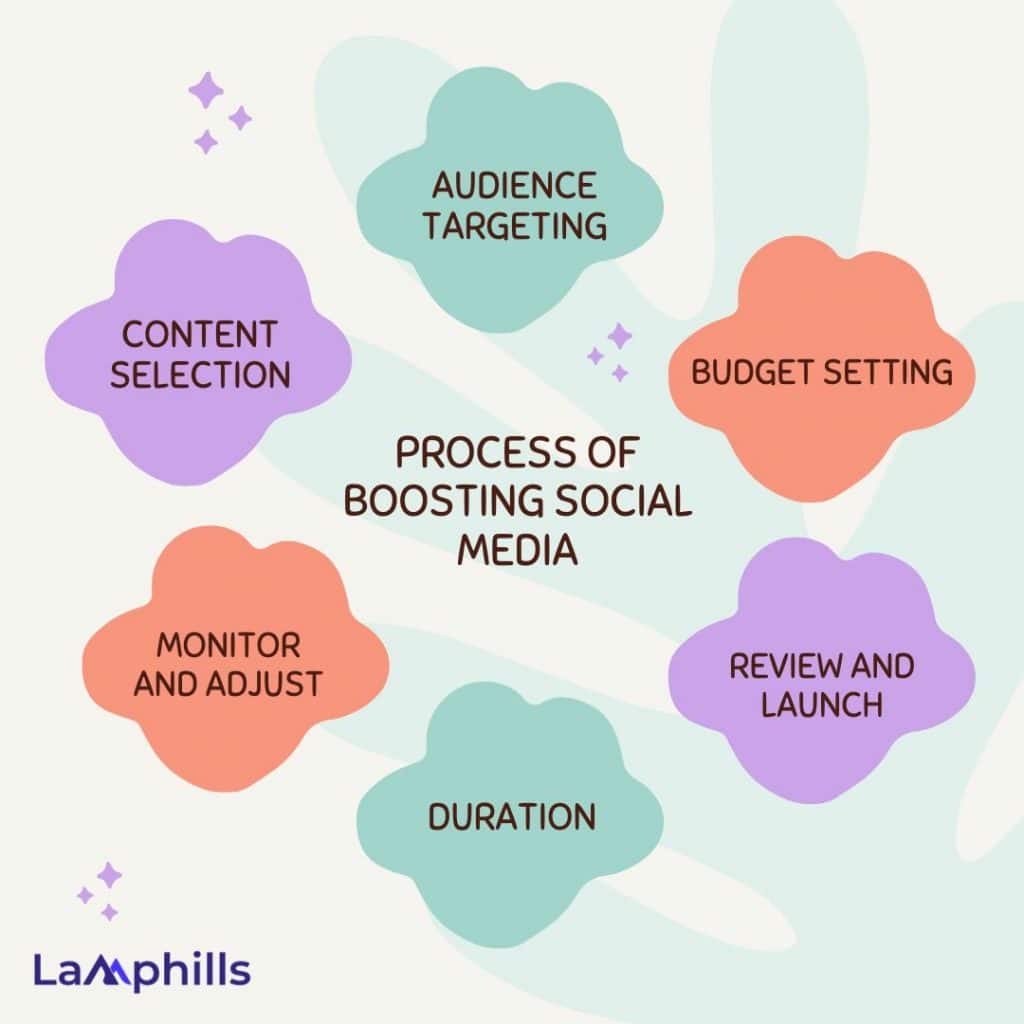Social Media Boost is a term that’s been buzzing around for a reason. It’s about strategies that help your brand stand out online. Many businesses miss out on the potential that a Social Media Boost can bring, focusing on traditional methods instead. From my experience, those who embrace these tips see more visibility and engagement. Imagine your posts getting the attention they deserve without paying for ads.
If you’re tired of your content not reaching enough people, then you’re in the right place. This guide will break down practical steps for a powerful Social Media Boost. By the end, you’ll know exactly what you need to do to get your brand noticed. Get ready to dive in and discover how to elevate your social media game.
Key Points
- One of the most significant advantages of boosting social media content is the ability to target specific audiences
- With the majority of social media users on mobile devices, ensuring your content looks great on a small screen is essential.
- Short-term boosts work well for time-sensitive offers or announcements.
- If you’re boosting posts without considering your audience, your content might not resonate, no matter how much you spend.
- Quality content is the foundation of effective social media boosting. Whether it’s an image, video, or text, ensure it’s polished and professional.
Social Media Boost
Social Media Boost is a powerful way to amplify your content’s reach and engagement on platforms like Facebook, Instagram, Twitter, and LinkedIn. Unlike organic posts that rely on your current followers to see and interact with the content, boosting puts your message in front of a broader, more targeted audience. This approach allows you to break through the noise and ensure that your key messages are seen by people who matter most to your brand.
Why Social Media Boost Matters
Social Media Boost is not only about throwing money at your posts. It’s a strategic tool that lets you:
#1. Amplify Your Reach
When you boost a post, your content reaches beyond your current followers. It gets seen by people who might not even know your brand exists. This increased visibility is essential for growth. Picture this: a local business wanting to grow its customer base. By boosting posts, they expose their content to a larger audience, potentially bringing in new customers who wouldn’t have found them otherwise. It’s like putting your brand in front of new eyes, day after day.
#2. Zero in on the Right Audience
Boosting posts isn’t just about getting seen; it’s about getting seen by the right people. You can target specific groups, such as age, interests, or location. For instance, if your brand focuses on sustainable products, you can make sure your boosted posts reach eco-conscious consumers. Or, if you’re running a fitness center, you can target health enthusiasts within your city. This precise targeting ensures your message is not only seen but also appreciated by those who are most likely to engage with it.
#3. Enhance Interaction with Your Brand
Boosting isn’t just for visibility; it’s a tool to drive engagement. When more people see your post, there’s a higher chance of getting likes, shares, comments, and clicks. It’s about fostering a connection with your audience and encouraging them to interact with your content. For example, a boosted post about a new product can generate more excitement and conversation around the launch. This interaction is crucial because it builds a community around your brand, making your audience feel involved and valued.
#4. Align with Business Objectives
Every business has goals, whether it’s driving website traffic, increasing event attendance, or boosting sales. A well-executed social media boost supports these objectives. Let’s say you’re promoting an upcoming event. By boosting your event posts, you not only increase awareness but also encourage more people to attend. The same goes for promoting products or services; a boost can directly lead to higher sales or more inquiries. It’s about using your social media strategy to achieve tangible results that align with your business needs.
Before you read further, check out this infographic on the process of boosting social media.

The Detailed Process of Boosting Social Media
Boosting social media is crucial for increasing visibility and engagement. To achieve this, follow a structured process. Here’s a detailed look at each step:
#1. Content Selection
The first step is deciding which post to boost. Not all content is created equal, so it’s essential to choose wisely. Look for posts with organic traction, like a decent number of likes or shares, because they’re more likely to perform well when boosted. For instance, a post announcing a new product, a limited-time offer, or a post with a compelling call-to-action (CTA) like “Shop Now” or “Learn More” is a good candidate for boosting.
#2. Audience Targeting
One of the most significant advantages of boosting social media content is the ability to target specific audiences. Instead of your post being seen by everyone, you can tailor who sees it based on various factors: demographics like age, gender, location, language, and even income level; interests, such as those who align with your brand’s offerings; behaviors like online purchasing habits or travel patterns.
More so, you can even target people who have already interacted with your business—like those who visited your website or signed up for your newsletter. For example, if you own a fitness brand and are launching a new line of workout gear, you would target women aged 18-35 who have shown an interest in fitness and health in the past three months. This ensures that your message reaches those most likely to be interested in your products.
#3. Budget Setting
Determine how much you’re willing to spend on your boost. Most platforms let you choose between a daily budget and a lifetime budget. With a daily budget, you set a maximum amount to spend per day on the boost. For example, a $10 daily budget means the platform will try to spend that amount each day to reach your target audience. With a lifetime budget, you set a total amount to be spent over the duration of the boost.
If you set a $100 lifetime budget for a 10-day boost, the platform will distribute the spending across those days. Your budget will affect how many people see your post. The more you spend, the larger the audience reaches. Align your budget with your goals. If you’re boosting a post to drive traffic to a major sale, a higher budget might be warranted. For smaller announcements or engagement boosts, a more modest budget might suffice.
#4. Duration
Decide on the duration of your boost. This can range from a single day to several weeks, depending on your campaign goals. Short-term boosts work well for time-sensitive offers or announcements. A 3-day boost could be perfect for a flash sale. On the other hand, long-term boosts are great for ongoing campaigns like a brand awareness push or a series of educational posts. For instance, if you’re promoting an event happening next week, you might choose a 7-day boost to build momentum and keep the event top-of-mind for your audience. But if you’re looking to maintain steady traffic to your website, you might choose a longer duration with a smaller daily budget.
#5. Review and Launch
Before hitting that “Boost” button, it’s important to review and launch your setup. Make sure the content is clear, engaging, and includes a strong CTA. Double-check that you’ve selected the right demographics and interests for your target audience. Confirm that your budget and duration align with your campaign goals. Once confident in your setup, launch the boost. The platform will then start promoting your post to the selected audience.
#6. Monitor and Adjust
After your boost goes live, the work isn’t over. Monitoring its performance is crucial to ensure it’s delivering the desired results. Track key metrics like engagement rate (likes, shares, comments), click-through rate (CTR), reach and impressions (how many people are seeing your post and how often it’s displayed), and conversions (sales or sign-ups resulting from the boosted post). If your boost isn’t performing as expected, don’t hesitate to make adjustments.
In addition, tweak the audience targeting, increase the budget, or even change the content mid-boost if necessary. For instance, if you’re boosting a post to drive traffic to your website but the CTR is lower than expected, refine your targeting to a more specific audience or adjust the copy to make the CTA more compelling
Check out this template for defining and segmenting target audiences.
Things to Avoid with Social Media Boosting
Social media boosting can do wonders for your brand, but it’s easy to slip up if you’re not careful. Boosting posts without paying attention to key elements can waste time and money. Here’s what to watch out for to ensure your efforts pay off.
#1. Ignoring Key Metrics
Tracking performance metrics isn’t just a nice to have; it’s crucial. Metrics tell you what’s working and what’s not. If you’re not paying attention, you’re essentially throwing darts in the dark. For example, you might be spending a lot of money boosting a post that doesn’t actually drive engagement or sales. By ignoring metrics like click-through rates, engagement, and conversions, you miss opportunities to fine-tune your strategy. Regularly check your analytics. If a post is underperforming, tweak your approach—whether that’s changing the timing, adjusting the targeting, or even revisiting the content itself.
#2. Going Overboard with Hashtags
Hashtags help categorize your content and make it discoverable, but overdoing it can backfire. Imagine scrolling through a post that’s cluttered with hashtags—it’s distracting and feels forced. Too many hashtags can dilute your message and make the post look desperate for attention. Instead, focus on a few relevant and high-performing hashtags that directly relate to your content. For example, if you’re posting about a new fitness product, using #Fitness, #Health, and #Workout is more effective than tagging every related word you can think of. This keeps your content clean, focused, and more likely to engage viewers.
#3. Overlooking the Target Audience
One of the biggest mistakes is forgetting who you’re trying to reach. If you’re boosting posts without considering your audience, your content might not resonate, no matter how much you spend. Different audiences have different preferences—what works for one group might not work for another. For example, a younger audience might prefer more visual, fast-paced content, while an older demographic might appreciate detailed, informative posts. Spend time understanding your audience’s behaviors, interests, and pain points. Use this knowledge to tailor your content, so it speaks directly to them. This increases the chances that your boosted posts will capture their attention and lead to action.
#4. Posting Low-Quality Content
Boosting a post won’t fix poor content. You might get more eyes on it, but if the content is dull, irrelevant, or poorly designed, it won’t engage your audience. Quality content is the foundation of effective social media boosting. Whether it’s an image, video, or text, ensure it’s polished and professional. For example, a well-designed infographic or a video that clearly demonstrates your product’s value will perform much better than a hastily thrown-together post. Invest time in creating content that’s not only visually appealing but also valuable and relevant to your audience. The better the content, the better the results from boosting.
#5. Forgetting to Optimize for Mobile
With the majority of social media users on mobile devices, ensuring your content looks great on a small screen is essential. If your boosted post isn’t optimized for mobile, it could lead to poor user experience, causing people to scroll past without engaging. This includes making sure images are correctly sized, videos play smoothly, and text is easy to read without zooming in. For example, a beautifully designed desktop ad might look cluttered and unreadable on mobile if not adjusted properly. Always preview your content on mobile before boosting to ensure it’s user-friendly and effective on any device.
Is Boosting Social Media Posts Worth It?
Boosting social media posts can be worth it, but it depends on your goals. It works well when you want to increase visibility quickly. For instance, if you’re promoting a new product or event, boosting can help you reach more people fast. But, it’s not a long-term strategy. The reach often drops once the boost ends. It’s best for short-term goals like getting more engagement or visibility on specific posts. However, if you’re aiming for sustained growth, investing in ads or organic strategies might be better.
What Are the Disadvantages of Boosting Posts?
Boosted posts often lack the targeting precision that a full ad campaign offers. You might end up paying to reach people who aren’t really your target audience. Second, boosted posts can lead to lower engagement over time because they prioritize reach over meaningful interactions. This approach might get you more eyes, but not necessarily the right kind. Lastly, you might not get the best return on investment. While it’s easy to boost a post, without a well-thought-out strategy, your money might not bring the results you expect.
Is Boosting Paid Social?
Yes, boosting is paid social. When you boost a post on social media, you’re paying to increase its visibility. It’s a way to make sure more people see your content, beyond just your followers. Boosting targets specific audiences, helping your post reach the right people. It’s a quick and simple method to drive more engagement without creating an entirely new ad campaign. Just choose a post, set your budget, and decide who you want to see it. The more you spend, the more people your post reaches.
How Much Does It Cost To Boost a Post on Social Media?
The cost to boost a post on social media varies based on a few key factors. Typically, you can start with as little as $1 per day, but that amount won’t get you far. To reach a decent audience, expect to spend between $5 and $20 per day. The actual cost depends on your audience size, how long you want the boost to run, and your goals.
Related Articles
- 10+ B2B Social Media Strategies To Boost Your Business
- 20 Social Media Management Services to Boost Client Satisfaction: +Top Agencies & Real-Life Examples
- Social Media Manager Courses To Boost Your Digital Marketing Skills in 2024






